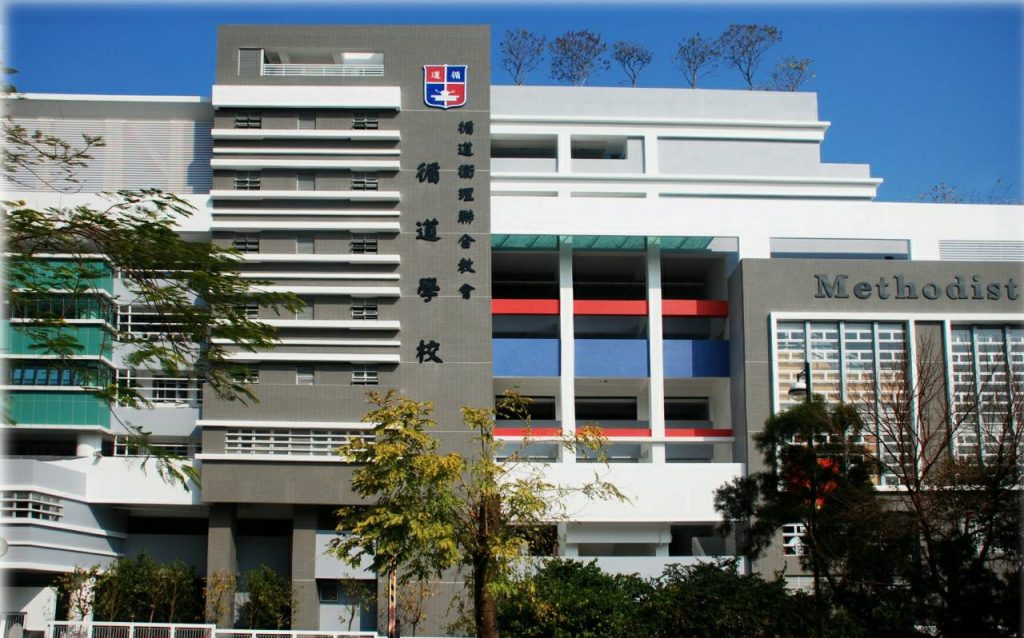Primary school admission is crucial as it sets the foundation for a child’s educational journey. The right school choice can provide a nurturing environment, quality education, and impact their overall development, academic progress, and social skills. In Hong Kong, parents who plan to apply to government or aided schools must apply through the Primary One Admission System (POAS), whereas parents who plan to apply to Direct Subsidy Scheme schools, private primary schools or English Schools Foundation (ESF) schools can apply to those schools directly. The POAS aims to ensure fair and transparent allocation of school places in government and aided schools, while alleviating some pressure imposed on young children entering primary school.
Read more: Public vs private school in Hong Kong: Choosing the right one for your child
What is the Primary One Admissions System?
The Primary One Admission System process is divided into two stages: the Discretionary Places Admissions stage and a Central Allocation stage. In summary, parents who have particular schools in mind should apply for the Discretionary Places Admissions stage. Parents who don’t just fill out the application form and wait until the Central Allocation stage to find out which school they have been allocated to. The entire system is administered by the Education Bureau of Hong Kong. To see if your child is eligible to apply under the POAS for the 2025 school year, they will need to meet these eligibility criteria:
- Born between 1 January 2019 and 31 December 2019
- Hong Kong resident
- Not currently enrolled in primary school
- Never been allocated a Primary One place
School nets
The Primary One Admission System in Hong Kong uses a concept called “school nets” to allocate school places based on the proximity of a child’s residence to the schools in their designated area. A school net refers to a specific geographic zone or district that encompasses several primary schools, and the whole of Hong Kong is divided into some 30 school nets. Each primary school is assigned to a particular school net, and children residing within that net receive priority for admission to the schools within it. The purpose of school nets is to ensure that children have access to schools in their local area, reducing the need for long commutes and promoting community integration. Students who reside in Macau or Mainland China and commute to Hong Kong also have a dedicated net that is close to the border crossing. Some of the most prestigious schools include:
| School Net | Popular Schools |
| Net 12 Wan Chai | St. Paul’s Primary Catholic School, Marymount Primary School, St. Joseph’s Primary School, North Point Government Primary School (Cloudview Road) |
| Net 41 Kowloon City | La Salle Primary School, Maryknoll Convent School (Primary Section), Holy Family Canossian School, Kowloon Tong Government Primary School |
| Net 91 Sha Tin | Baptist Lui Ming Choi Primary School, Stewards Pooi Kei Primary School, Sha Tin Methodist Primary School, Po Leung Kuk Chee Jing Yin Primary School |
| Net 62 Tsuen Wan | CCC Kei Wai Primary School (Ma Wan), Si Yuan School of the Precious Blood, Tsuen Wan Government Primary School, Tsuen Wan Public Ho Chuen Yiu Memorial Primary School |
| Net 70 Tuen Mun | PLK Horizon East Primary School, Tuen Mun Government Primary School, YCH Law Chan Chor Si Primary School, P.L.K. Vicwood K.T. Chong No.2 Primary School |
Read more: How to choose the best primary school in Hong Kong for your child?
Procedures of POAS
Applying through the POAS may sound like a daunting task, but it’s actually less complicated than it sounds. First, you need to decide whether or not there are specific schools you want to apply to. If the answer is yes, you will need to apply for a Discretionary Place. If not, you will go directly to the Central Allocation stage.
Stage 1: Discretionary Places Admissions
The first stage of the POAS is known as the Discretionary Places Admissions stage, which usually occurs near the end of September. Parents who decide to participate can choose only one school that is located either inside or outside of their school net to apply to. Discretionary places account for around 50% of the spaces offered at each school, and are further divided into two categories.
Category A
Category A refers to applicants with elder siblings that are currently studying at the preferred school OR parent(s) that are working at the preferred school at the time of application. This category accounts for roughly 30% of the discretionary places, and essentially guarantees a spot for applicants who fall in this category.
Category B
Category B makes up the remaining applicants who do not qualify for Category A, and is known as The Points System. Points are scored according to several criteria listed in the table below. Even though it is a points system, schools are not allowed to conduct any tests or interviews. This category accounts for around 20% of discretionary places. Note that each applicant can only claim points for one relationship criteria from 1 to 5, and one criteria from 6 to 7. For example, if your child has a sibling who graduated from the primary school AND you are working in the secondary school section of the same primary school, you will only be awarded 20 points.
| Number | Criteria | Point allocation |
| 1 | Applicant has a parent working in another section of the primary school (i.e. the Kindergarten or Secondary sections) | 20 points |
| 2 | Applicant has a sibling studying in the secondary section of the primary school | 20 points |
| 3 | Parent is a school manager of the primary school | 20 points |
| 4 | Parent or sibling is a graduate of the primary school | 10 points |
| 5 | Applicant is the firstborn child | 5 points |
| 6 | Applicant has the same religious affiliation as the sponsoring body that operates the primary school | 5 points |
| 7 | Parent is a member of the organization that sponsors the operations of the primary school | 5 points |
| 8 | Applicant is between the ages of 5 years 8 months and 7 years old | 10 points |
Discretionary places admissions results are usually released in late November. If your child is admitted into the school of your choice, you must register on the dates specified by the school. If you fail to register on those dates, your spot will be forfeited.
Stage 2: Central Allocation
Following the Discretionary Places stage, applicants proceed to Central Allocation. This includes both new applicants and those who were unsuccessful in the Discretionary Places stage. Primary schools reserve 50% of their Primary One places for Central Allocation. The Education Bureau will notify parents in mid to late January to complete school selection procedures at designated Central Allocation centres. Like the Discretionary Places stage, Central Allocation is divided into two parts.
Part 1: Unrestricted School Choices
In this part, parents can select up to three schools from any school net, including their residential school net. Even if unsuccessful in the Discretionary Places stage, parents can choose the same schools again during Central Allocation.
Part 2: Restricted School Choices
In this part, parents must select schools within their residential school net. They can choose any number of schools, up to thirty. Importantly, if parents selected schools from their residential school net in Part 1, they can list these schools again in Part 2 to increase their chances of allocation to preferred schools.
The computerised allocation system will first process Unrestricted School Choices, followed by Restricted School Choices. If a school receives more applications than available places, the computer will randomly select students to ensure maximum fairness in allocation.
Central Allocation results will be announced on June 4-5, 2025, via post or SMS. Parents can also check results through the POA e-platform from 10 am on June 4, 2025. Parents must register their children at the allocated school within the specified period. Below are the key dates and events for Primary One admission in 2025:
| September 2-27, 2024 | Distribution of Primary One Admission Application Forms |
| September 19-27, 2024 | Application for Discretionary Places |
| November 18, 2024 | Announcement of Discretionary Places results |
| November 20-21, 2024 | Registration for successful Discretionary Places applicants |
| Early January 2025 | Central Allocation notification letters sent to parents of unsuccessful Discretionary Places applicants |
| Mid-January 2025 | Central Allocation application
|
| June 4-5, 2025 | Release of Central Allocation results via post/SMS/e-Platform |
| June 10-11, 2025 | Registration for successful Central Allocation applicants |
Previous primary schools allocation data from Tutor Time’s graduates
Tutor Time graduates go on to attend all kinds of top primary schools in Hong Kong, ranging from public to private and local to international. In 2024, 60% of our graduates got accepted into international primary schools including Chinese International School, Hong Kong International School, Canadian International School, ESF, ISF, Harrow International School and many more. The remaining 40% of our graduates went on to attend top local schools such as St. Francis’ Canossian School, St. Paul’s Co-ed, St. Mary’s Canossian School, St. Hilary’s Primary School and many more.
Conclusion
Preparing for primary school can be daunting and challenging for many families. With the abundance of options available in Hong Kong, deciding where to apply and meeting all the requirements of each school can be difficult. For those applying to government and aided schools, the Primary One Admissions System helps to centralize the process and alleviate a lot of the stress from both parents and children. Just remember that if you do plan to participate in the POAS, you will have to keep track of the key dates for the Discretionary Places Admissions stage (which starts in September) and the Central Allocation stage (which starts in January). Do your research beforehand to see which school net you reside in and what school options you have, then decide if you want to apply for a Discretionary Place. For those applying for 2025, the process has already begun, so keep an eye out for the key dates mentioned above!


